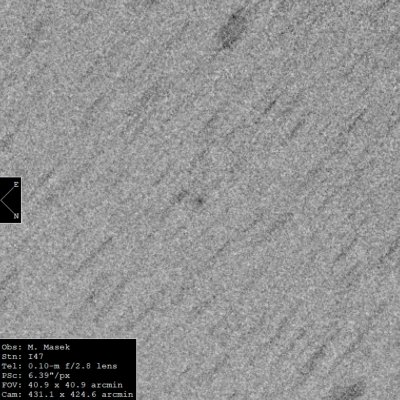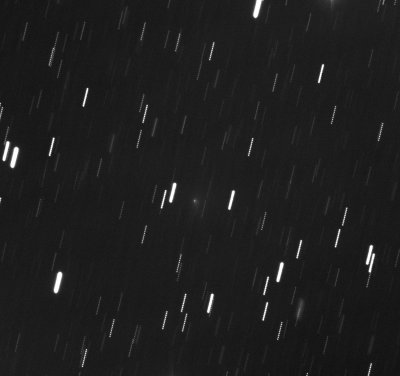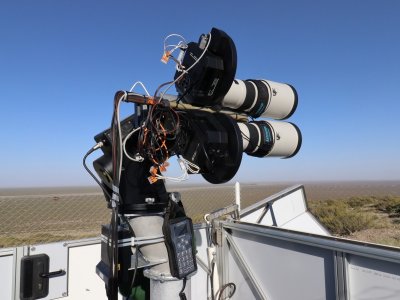
Discovery image of the comet C/2024 Y1 The comet was not discovered by mere luck, but the result of
dedicated effort. Martin Mašek used the free time of the FRAM
telescope in Argentina to scan the sky near the western horizon soon
after sunset and check for possible new objects. This effort bore
fruit on the night of December 24-25, when a very small spot appeared
in the field of view. When Martin found it again the next night, he
became slightly optimistic that it might in fact be a new discovery.
After confirmation of its existence not only by another FRAM
telescope, but also by other observers around the world and, most
importantly, by the 1.5 m Danish telescope at the La Silla Observatory in
Chile, the discovery was confirmed by the Minor Planet Center. The
comet was named after its sole discoverer “Mašek”.

Confirmation image of the C/2024 Y1, captured by the
1.5 m telescope at the
La Silla Observatory, Chile The telescope used to discover it consists of a pair of cameras, a
G4-16000 (CCD) and a C4-16000 (CMOS), both attached to photographic
lenses with a focal length of 300 mm. The
large camera sensors combined with the short focal length optics
resulted in an exceptional field of view of 430 × 430 minutes. However, the comet was discovered by
the CMOS camera C4, due to its higher sensitivity and, most
importantly, much faster download, serving to capture the largest
possible area of the sky in the shortest possible time.

The FRAM telescope at Coihueco, Argentina, with G4 and C4
cameras For more details about the C4-16000 see the C4
Camera Product Page.
Images on this page courtesy of Martin Mašek and Hana Kučáková.
| 